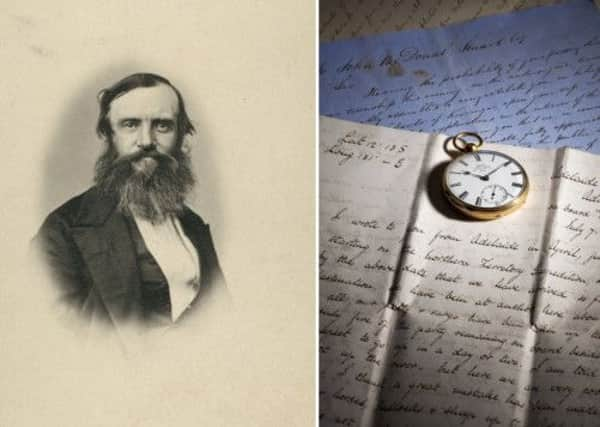Scots explorer’s 150yo pocket watch sold for £48k


John McDouall Stuart is known as one of the most accomplished and famous of all Australia’s inland explorers.
Stuart was awarded the gold watch on 9 May 1859 by The Royal Geographical Society in London in recognition of his expeditions into the desert wilderness of central Australia.
Advertisement
Hide AdThe James Brock pocket watch was brought into Bonhams Edinburgh by its Scottish owner and has sold for £13,323 more than was expected.
It was sold along with handwritten letters to and about Stuart, between 1862-1864, for £48,323 during Bonhams’ Australian, European & Asian Decorative Arts in Sydney.
Born in Dysart, Fife, in 1815, Stuart emigrated to Australia at the age of 23 having become a civil engineer at the Scottish Naval and Military Academy in Edinburgh.
Stuart soon found employment with colony’s Surveyor General, where his superior officer, was the famous explorer Captain Charles Sturt.
He soon began embarking on expeditions into the centre of the continent - his first one in 1858 took four months, made his reputation, and earned him the gold pocket watch.
A year later another journey was financed and Stuart travelled 500 miles and blazed a trail with sufficient water for a permanent route north.
Advertisement
Hide AdHe set off again on 2 March 1860 with two men and thirteen horses but most of their provisions were soon spoilt by floods, and when the party reached a freshwater creek that Stuart named after the expedition’s financier, William Finke, they were suffering from scurvy and Stuart himself had lost the sight of his right eye.
Despite this disability, the “small, wiry” Stuart, who stood just 5ft 6ins tall and weighed just nine stone, carried on with another three expeditions - his last making him the first man to travel through Australia south to north.
Advertisement
Hide AdHe left North Adelaide at the end of October 1861 but Stuart was delayed by an accident, on 8 January 1862 he left Chamber’s Creek for the north and on 24 July 1862 Stuart reached the Indian Ocean at Chambers Bay (east of present day Darwin).
The party turned back for the south but ill with scurvy and nearly blind, Stuart had to be carried on a stretcher slung between two horse.
He recovered sufficiently to ride by the time they reached Mount Margaret on 26 November and arrived in Adelaide on 17 December.
On 21 January 1863, there was a public holiday and crowds lined the streets amid banners strung from buildings to celebrate Stuart’s success.
Chief Executive Officer at Bonhams Australia James Hendy said today: “We are incredibly excited to have discovered this watch though our Edinburgh saleroom and with a strong track record for selling items of historical significance to Australia we are perfectly placed to offer the watch locally here in Australia.”
Stuart’s explorations eventually resulted in the Adelaide-Darwin Overland Telegraph being built and the main route from Port Augusta to Darwin being established, which is now known as the Stuart Highway in his honour.
Advertisement
Hide AdWhite-haired, exhausted and nearly blind, Stuart decided to visit his sister in Scotland and sailed in April 1864.
He later went to London where he died of “ramollissement” - dementia - and cerebral effusion - stroke - on 5 June 1866, aged only 50, and was buried in the Kensal Green cemetery.
Advertisement
Hide AdA statue to Stuart can be found in Victoria Square, Adelaide, while in Darwin, both a statue and a monument celebrate his honour.
In March 2010, Freemasons in Alice Springs, which was known as the town of Stuart until 1933, commissioned a 4 metre high concrete statue of the Scot for donation to commemorate the 150th anniversary of Stuart’s his expedition, during which he had reached the town of Alice Springs.
The Town Council approved the project in breach of its own public art policy, sparking widespread public controversy; some locals objected to a memorial featuring a white man carrying a gun in a town where race relations between indigenous and non-indigenous communities remains a sensitive issue.
In Britain, Stuart is commemorated by a blue plaque on the house where he lived and died in Kensington, London, No. 9 Campden Hill Square.